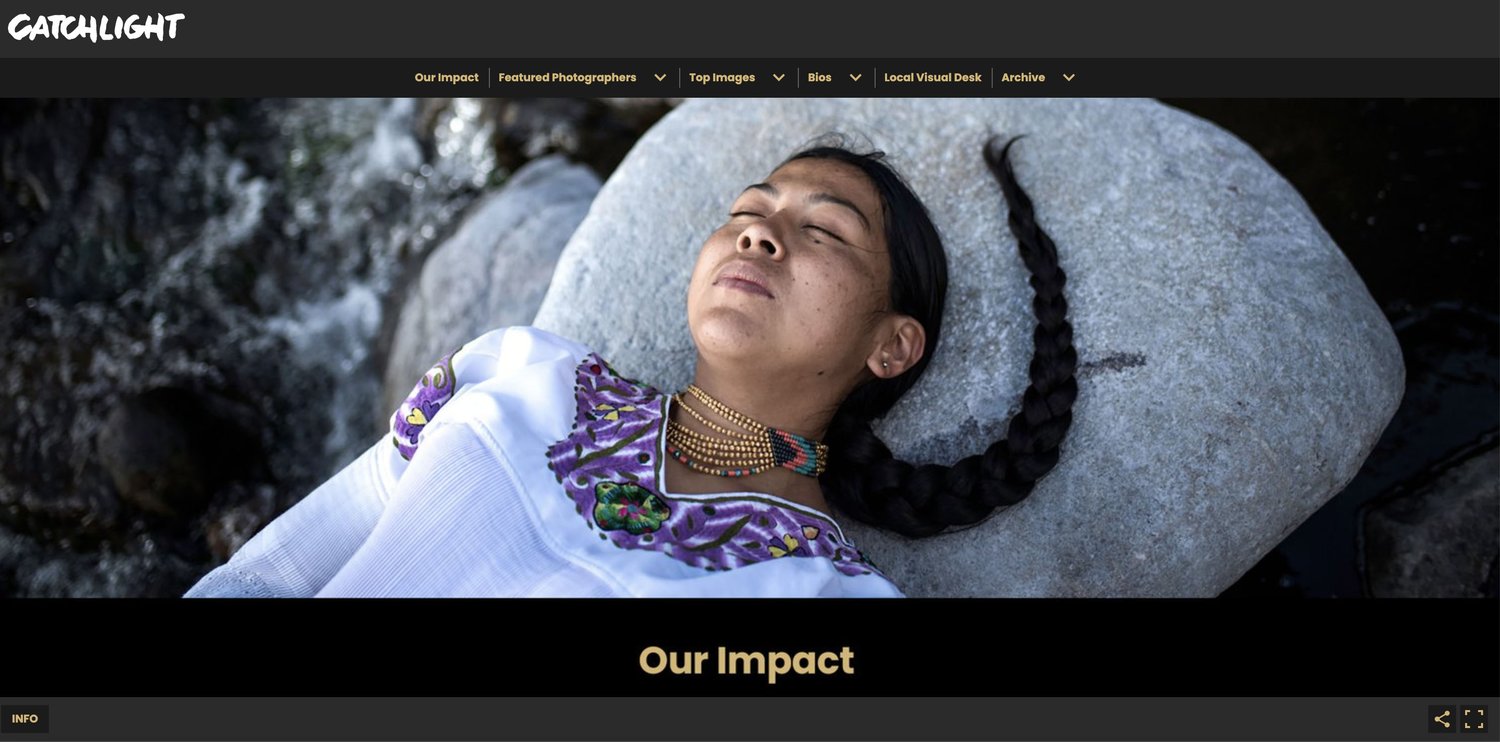Case Studies
Case Studies of MediaStorm's work.
CatchLight’s 'Our Impact' site details the results of the organization’s mission to cover local communities and create social change
MediaStorm was commissioned to create a destination site to showcase this material, and to serve as an archive for past reports.
The goal was to include all the information included in the print version and allow users to navigate it in an interactive way that provided additional depth to the material.
The site serves as a standing destination for CatchLight’s impact reporting.
The Seattle AI Film Festival website serves not just as a document of the festival itself, but as a record of the early stages of generative AI filmmaking at this historic moment in time.
The inaugural Seattle AI Film Festival held in March of 2025 was a groundbreaking event allowing creatives from around the world to showcase cutting-edge films made using artificial intelligence.
We built the festival's site using the MediaStorm Platform and incorporated many of its sophisticated features in order to showcase its catalog of groundbreaking films.
In the fall of 2021, The Augmented City launched Season 1 of Burner Face, an immersive audio drama about Seattle, 100 years from now.
The Burner Face website, built using the MediaStorm Platform, provides a 360 rich media experience driven by the linear podcast.
It features a custom built, interactive map of Seattle, Puget Sound and the Northern Pacific coastlines 100 years from now after 22 meter rise in sea levels.
The speculative map was developed in partnership with MediaStorm and Seattle-based professional cartographer Jeffrey Linn.
CPOY's entire hand-built site was replaced with a single responsive website release using the MediaStorm Platform.
POY utilized a series of embeddable players to showcase their winning images.
Locator maps, related links and direct links to license images have been added to many of the images to provide greater context and transactional benefits to the photographers.
MediaStorm, in partnership with the Carnegie Corporation of New York (CCNY) and Transformative created US-Russia Relations: The Quest for Stability, the definitive guide to US-Russia relations.
The project leverages Carnegie’s unparalleled access to issue-area expertise, with MediaStorm’s storytelling capabilities, to create a communications toolset that offers historical content, fact-based journalism, and potential solutions to the current impasse in US-Russia relations.
Powered by the MediaStorm Platform, this responsive, interactive experience showcases video, timeline, audio, interactive charts and maps, to explore why US-Russia relations are critical to the preservation of American democracy and global stability.

